The Immortal Game: The Most Famous Chess Game
The most famous example of single-minded chess strategy and tactics comes from a game played in 1851. So brilliant was the series of moves played by Adolf Anderssen that the game became known as "The Immortal Game". When Anderssen check-mated his opponent, he was down a bishop, both rooks, and his queen. He mated with his knights and remaining bishop. Hartson described it as a feat "perhaps unparalleled in chess literature"[2]. Famous Austrian chess player Ernst Falkbeer coined the name The Immortal Game.
Karl Ernst Adolf Anderssen (July 6, 1818 – March 13, 1879), a german chess master, was considered the best in the world for a brief period, a well-liked and respected member of the global chess community at the time. He learned chess from his father at 9 and continued learning from books. He is well known for publishing books of chess puzzles. He is most famous for The Immortal Game, which he played during a break at the first world chess tournament with Lionel Kieseritzky in London.[1]

Adolf Anderssen
Lionel Kieseritzky was also an accomplished German player, but not that successful against grandmasters. Kind of sucks being famous for losing a game. Don't get me wrong he was and is respected.

Lionel Kieseritzky
The Game
Anderssen, playing as white, started with the King's Gambit Opening. It is an opening I wrote about in a recent Steemit post, which during the course of writing gave me the idea to write a post about The Immortal Game.
The King's Gambit starts with 1.e4 e5 2.f4, it is a common opening more at club level, less at the grandmaster level these days. White offers the f-pawn right away to gain a center advantage. If black takes the pawn, it can lead to an exciting game. In this case black did take the pawn, and the game became one of the most famous in history. Take that King's Gambit haters. You know who you are.
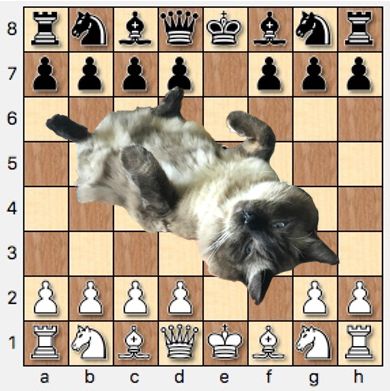
Rocket! Off the board. Sorry about that let's try again.
The first series of moves:
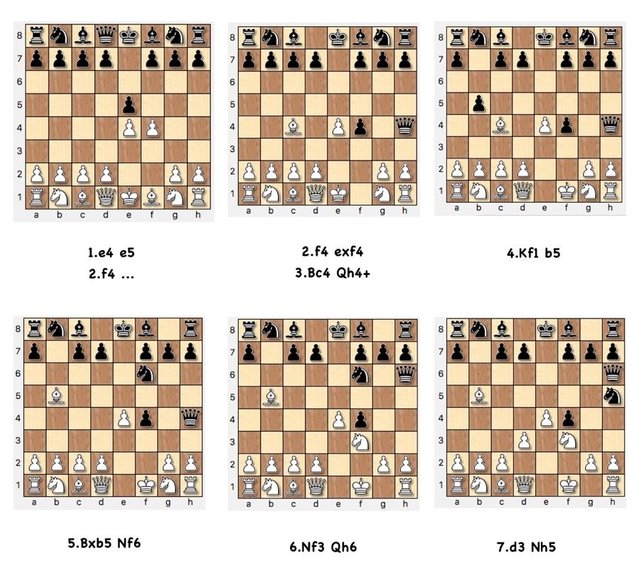
After the initial gambit by white, black takes the pawn, then white offers another gambit, the bishop. By putting the bishop out there, white is sacrificing his king's safety. The black queen is allowed to check the king, and the king must move, that means the white king can no longer castle. However, this breaks an important rule in chess, it's usually not a good idea to bring your queen out early. This game is a prime example of why that is a rule.
Indeed in the following moves 4-7 white attacks the queen while continuing to develop and the queen must run around. White also makes the move 7.d3 to solidify center control, and black makes the move 7...Nh5, which prepares to fork the rook and king from g3 with the queen to attack the rook. In the last position black has an attack formed, but white has more pieces developed and center control.
Next moves:
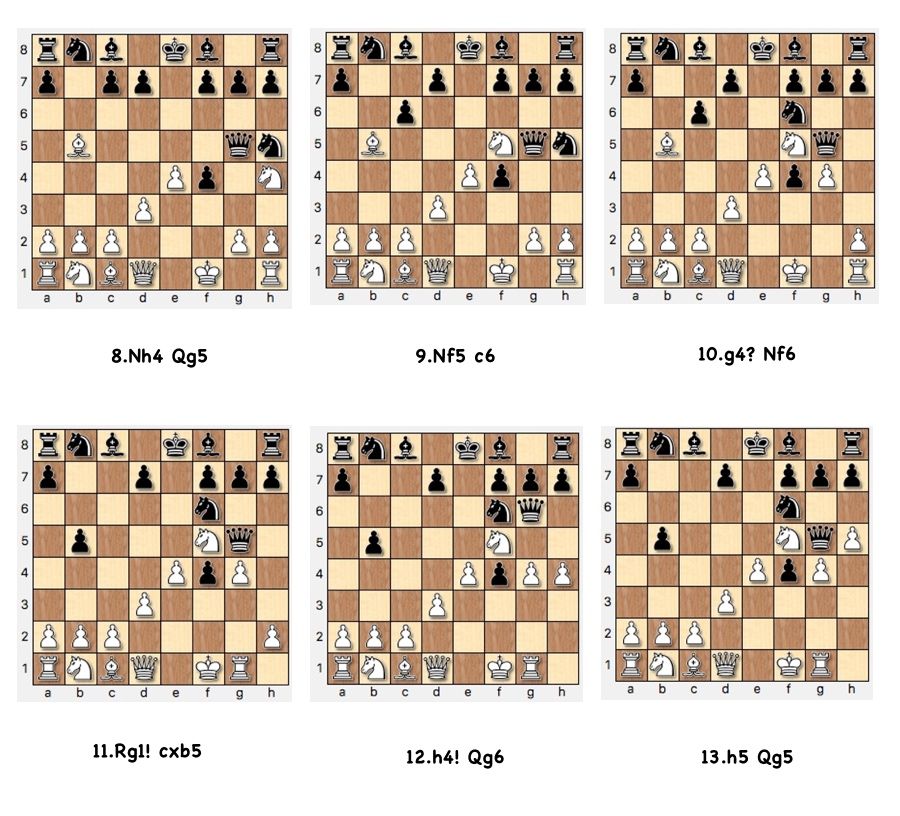
In these moves you see white rather brilliantly trap black's queen while continuing to develop his pieces, and shows white's first important sacrifice. White moves his knight to h4 and the queen attacks, not a great move by black. White makes the move knight f5, or as Grandmaster Ben Feingold would say, "Knife" f5(it's usually a good square for the white knight if you can manage it).
Then when white's bishop on b5 is attacked, he sees the opportunity to trap black's queen and just lets white take it. Black takes the bishop and it's too late to stop the queen trap by the f and h pawns.
At the end of that sequence, let's consider the board. White is slightly more developed, it's knight and pawns well positioned in the center. Black is up a minor piece, the bishop, which is typically a big disadvantage for white, but black's queen is trapped and will have to spend a lot of time trying to free her, like me trying to get a date in high school. I know how you feel, Kieseritzky. Next we'll see Kierseritzky play a pretty much textbook game, while Anderssen will take that textbook, place it casually on a table, then kick the shit out of it until the table explodes, then hand it back to him totally shredded. Little known fact, Anderssen was ripped and a beast in the octagon.

deadly on and off the chess board
Anyway,
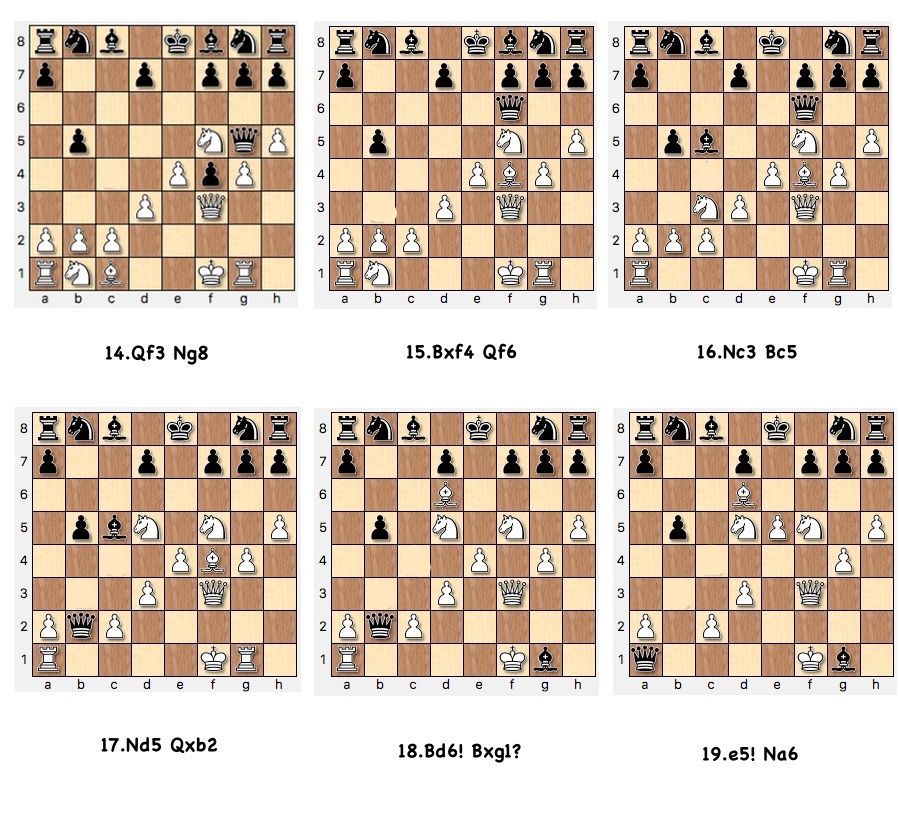
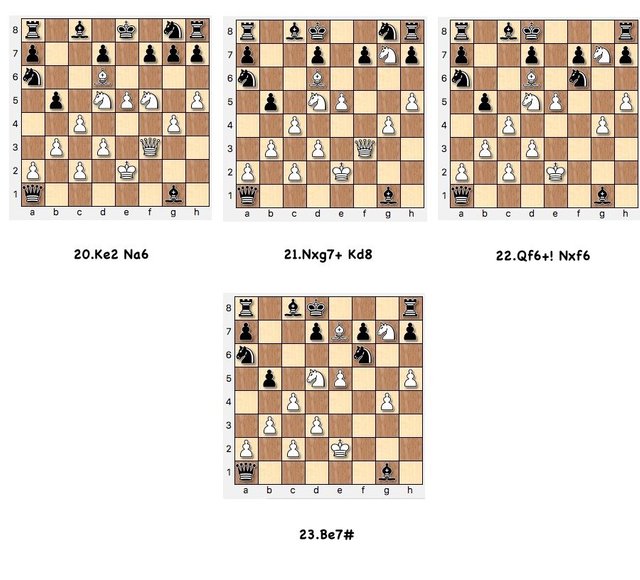
In the next couple of moves they jockey about for position in the center a bit, black has to give up the e pawn. Then in the final sequence black sets up an attack on white's rooks, and the really interesting thing is white just says go ahead they're all yours, and keeps pressing forward with his knights and remaining bishop.
Indeed black takes the rooks, and white gives up his queen in the final moves to deliver a really beautiful check mate to black using his two knights and remaining bishop.
White had a strong game and could have won in many other ways, however Anderssen decided to show unequivocally that you only need a few active pieces to win, as long as you maintain good board center control and press forward. He did it so well that the game has been the most well known example of this tenet for 170 years.
Sources
Wikipedia
- Chernev, Irving. The Chess Companion. 1968. ISBN 0-671-20104-2.
- Hartston, Bill (1996). Teach Yourself Chess. Hodder & Stoughton. p. 150. ISBN 0-340-67039-8.
- Kling und Horwitz: The Chess Player, July 1851

Great Post. Keep them coming.
Thank you. This looks interesting but.. how many people can reach this level?
I really enjoyed your review. I don't have such a developed analytical mind and I wouldn't be able to correctly determine the winner in a chess tournament. I prefer cricket and cast my vote for the Indian National Championship. I place my bets here - https://1xbetapk-india.com/ This is the most reliable site for everyone who loves to make sports bets.
Great post. But the word you want is "tenet" not "tenant."
Haha nice
good post.
follow me @goga
Always good to learn new things. Thanks man. #ssg
my pleasure.
giphy.com
great post
Your post has been upvoted, from the #redfish circle
This post has received a 3.71 % upvote from @booster thanks to: @cryptastic.
Thanks for this excellent outline of this super match of history. Have you played much against the AI/ML/computer systems or only against human players? If you have played against a machine, did you learn anything from the experience vs. what you learn from playing a human? @cryptastic
I've played against both. I'm only an amateur so for me it can be hard to tell the difference. Computer opponents can be set to different degrees of difficulty and style. For example, you can find computers that can play in similar styles to famous grandmasters; the technology is amazing. I would say that the big difference with human players is that they make blunders, i.e., stupid moves/big mistakes. Even at a low difficulty setting, computers rarely make the kind of blunders that humans do. I think that it's more fun to play humans though because those blunders can actually make the game more exciting and interesting. Thanks for the comment,
AMAZING BRO VERY NICE